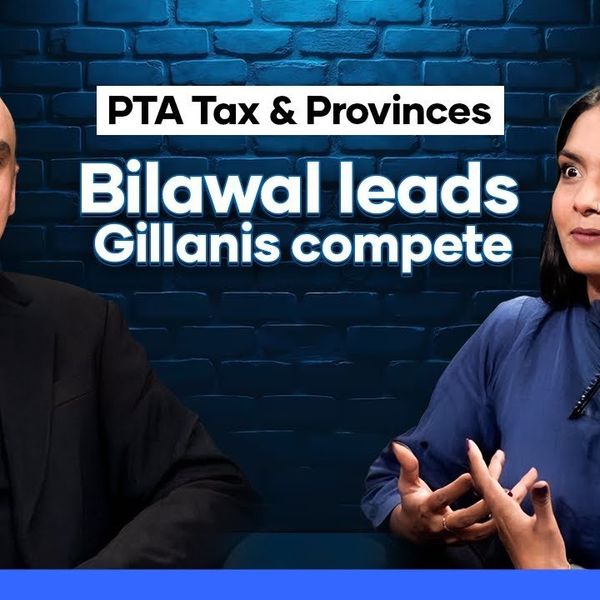Oil and gold markets on edge as tensions rise in the Middle East
Escalating Israel-Iran tensions are driving volatility in oil and gold markets, with concerns over energy supply and rising demand for safe-haven assets.

Rana Tabbara
Senior Business Producer
Rana Tabbara is a UAE-based reporter and content creator known for dynamic storytelling, impactful reporting, and high-profile interviews. She interviewed leaders including the UAE Minister of Energy, the Australian Prime Minister, the Saudi Minister of Tourism, the Armenian Minister of Economy, and CEOs of major companies. Rana covered big events like the World Government Summit, LEAP, Cityscape KSA, IDEX, among others. Her previous experiences include The New York Times, CNN Business Arabic, and L'Orient-Le Jour.

Potential Israeli retaliation against Iran is keeping traders on edge, with oil prices fluctuating and fears of further disruptions.
Shutterstock
As the week begins, both oil and gold markets are caught in a web of geopolitical tensions and economic uncertainty. Oil prices have dipped as traders await potential retaliation from Israel against Iran following last week’s missile attack, while gold remains a go-to safe-haven asset amid these rising tensions.
U.S. President Joe Biden’s decision to hold off on striking Iran’s crude oil fields adds a layer of uncertainty that is rippling through global markets.
Brent crude, which surged to its highest level since January 2023 just days ago, dipped below $78 per barrel as markets opened this week. Similarly, West Texas Intermediate (WTI) hovered around $74.
While Biden indicated on Friday that he does not yet know when Israel might retaliate, he hinted at exploring "other alternatives besides striking oil fields." The absence of clarity is palpable, and markets are bracing for the unknown.
Yip Jun Rong, a market strategist at IG Asia, told Bloomberg the situation is a “waiting game,” with traders and analysts alike holding their breath for clarity on how these tensions will unfold.
Any direct strike on Iran’s energy infrastructure, according to Rong, could push Brent crude prices above $80 per barrel, a threshold that would reverberate across the global economy.
A fragile balance: Supply and demand
Despite the geopolitical tension, the oil market’s fundamentals remain in flux, with demand forecasts uncertain and oversupply concerns lingering. China, the world’s largest importer of oil, is a key variable.
While Middle Eastern tensions dominate the headlines, questions persist about whether demand from China will be strong enough to sustain price hikes in the face of potential supply disruptions.
Iran, whose oil production has nearly returned to full capacity, faces significant risk if tensions escalate. Even a small disruption in Iranian oil exports could have outsized consequences for global supply chains.
Escalating costs: Oil tankers and trade routes at risk
Amid these rising tensions, another key indicator has caught the market’s eye—shipping costs. The price of renting oil tankers has skyrocketed, as traders rush to secure crude supplies before further conflict erupts.
According to market data, shares of oil tanker companies have surged, reflecting growing concerns that the situation between Iran and Israel could spiral out of control.
The cost of moving oil is a bellwether for the broader industry. As shipping rates climb, some traders are starting to look for alternative routes and options to ensure their supplies. Yip Jun Rong noted that “any strike on Iranian energy infrastructure could significantly elevate Brent crude prices," pushing them well above the current $80 benchmark.
Ripple effect: Options and investor sentiment
The oil options market continues to reflect bullish sentiment, with traders favoring call options that benefit from rising prices. Brent’s implied volatility is near its highest point in nearly a year, while money managers are increasing their long positions on Brent. Investors are preparing for the worst-case scenario—significant supply disruptions that could lead to a sharp uptick in prices.
Goldman Sachs analysts, including Dan Struyven, are even more cautious. In a recent note, they predicted that Brent crude could soar to $90 per barrel if Iranian oil exports are cut off due to escalating conflict. Such a scenario would not only raise fuel costs globally but also exacerbate inflationary pressures already weighing on the global economy.
Saudi Arabia’s strategic moves
Amid all this volatility, Saudi Arabia has taken decisive action. The kingdom raised the price of its flagship oil grade for Asian buyers by more than anticipated, signaling confidence in sustained demand from the region.
At the same time, however, it cut prices for all grades destined for U.S. and European markets—a move that may reflect concerns about demand growth in the West amid recession fears.
China, meanwhile, is preparing for an economic pivot. The country’s top economic planner is set to hold a press conference on Tuesday to discuss a suite of policies aimed at boosting growth.
Analysts expect Beijing to expand public spending as part of a broader stimulus package to reignite its slowing economy. The question remains: will China’s policy shift be enough to stabilize demand in the oil market?
Gold's role as safe-haven asset
As oil markets roil in uncertainty, another commodity has taken center stage—gold. The precious metal’s prices have remained relatively stable, with traders weighing rising tensions in the Middle East against strong U.S. jobs data, which suggests that the Federal Reserve may not cut interest rates as aggressively as some had hoped.
Spot gold is trading near $2,650 an ounce after closing last week with little change.
Gold’s appeal as a safe-haven asset has only strengthened as geopolitical tensions intensify. Historically, when the Middle East is in turmoil, demand for gold rises.
Traders are keeping a close eye on the evolving situation in Gaza and Lebanon, as well as the potential for further missile attacks from Iran, which could spark a surge in safe-haven buying.
Global ripple: Interest rates, inflation, and investor strategy
Adding to the complexity, traders are also evaluating the likelihood of interest rate cuts by the Federal Reserve. Last week’s U.S. employment numbers exceeded all expectations, causing markets to scale back bets on a significant rate cut in November.
Historically, lower interest rates benefit gold, which does not yield interest, making it an attractive option for investors in uncertain times.
Gold has already seen a 30% rise this year, with prices reaching record highs amid growing optimism for rate cuts and heightened demand for safe-haven assets. Central bank buying and increased geopolitical tensions have further bolstered the yellow metal’s allure.










Comments
See what people are discussing